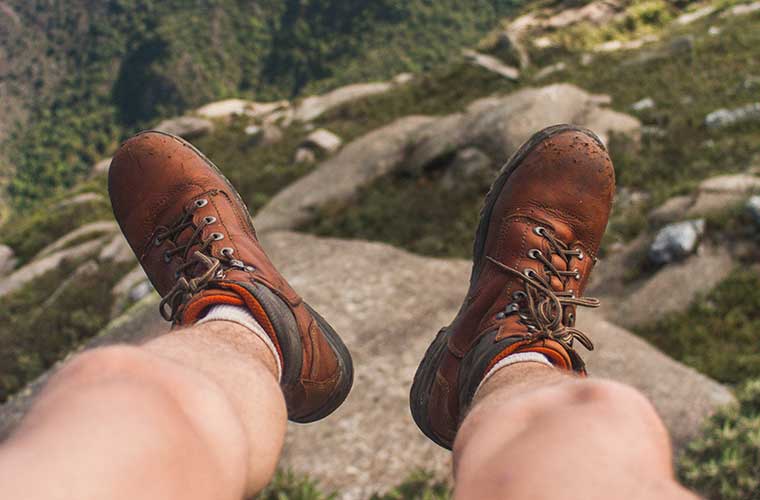How to choose the right hiking boots for your activity

What is the problem with the trekking boots? Apart from the fact that they are expensive, I mean, but do you really need to buy such an expensive item when you are just starting out?
"The answer is yes.
Your hiking boots, in fact, are one of the most important elements in your hiking equipment. In hiking, you will use your feet more often than any other part of your body, and therefore all the more reason to give them ample protection. The trekking boots that are robust and can protect your feet from rough roads.
Follow the guide below for a list of things to consider when buying your hiking boots:
This feeling of "solidity
This is what hiking boots are all about. The good ones have that "solid" feeling on the bottom, which means you shouldn't be able to feel rocks or stones through the soles. What if you can feel them? Well, sooner or later, after many miles on the trail, there's a good chance that your feet will start to hurt, and that's not good, especially if you still have to cover the final miles before the end of your hiking journey.
When you buy a pair of hiking boots, proves its solidity. Try pressing the sole of your thumb into the bottom. If it feels soft, those boots can't give your feet the protection they need. You can also try twisting the soles. If you can, then they are also probably too soft for hiking.
Always remember that trails are not like the pavement in front of your house. They are rocky and if you don't wear a good pair of hiking boots, you can suffer with them after miles of walking on very rocky terrain.
Side protection
The bottom of your hiking boots is not the only important thing. Good boots are also expected to provide protection on the sides. In fact, the reason they are called "heavy" hiking boots is that they have extra padding to protect your foot from stones, rocks and branches that you might step on and that could puncture the side.
If you have chosen fabric boots, be sure to wear them with protective "piping". These are about 10 cm or more away from the soles to provide additional protection.
Ankle support
It is clear that Achilles he knew nothing about boots, so he had nothing to protect himself when he Paris hit him with an arrow in the ankle. Don't follow in the footsteps of Achilles. Choose good hiking boots with good ankle support.
Here's how to choose them:
Grasp the top of the boot.
Try to bend it sideways.
If it bends easily, it will probably not provide the level of protection needed in the mountains.
The upper of the boot should be stiff enough to hold the ankle in place. This is how you determine a pair of hiking boots with good support.
Don't let the water in
Wet feet cause blisters. Blisters are painful. Blisters are evil. Prevents blisters at all costs. Get hiking boots that are waterproof. In addition to the popular Gore-Tex There are countless waterproof membranes, which in addition to protection against water, provide breathability -an essential aspect to avoid moisture on your feet-. If you find hiking boots that are not waterproof, at least make sure they are capable of waterproofing. Fabric boots can be waterproofed with special waterproofing solutions, such as liquid silicone. However, these solutions are generally not waterproof enough for the boots to be useful.
READ ALSO:
Don't miss any adventure in the Pyrenees!
